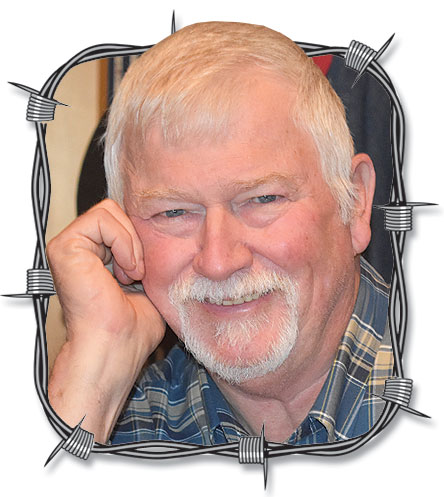Back in the day I was a pretty good hay hand. At 17 and 18, I never had trouble finding work, and I never turned down a job if I was free to take it.
The pay was $1 an hour, and I was happy to get it. That doesn’t sound like much now, but a 1965 dollar was worth more than seven times what it is today. I probably was, too.
Adjusted for inflation, that dollar of years ago was lots more than I make pounding out these columns, but the working conditions in my air conditioned office are a whole lot better than those of a blistering Ozarks hayfield in July.
I’ve seen hay crews out this summer – mostly kids – and I’m absolutely sure I couldn’t keep up with them. A half-century of soft living has put my hay hauling days far behind me.
Even if the heat and work didn’t put me in the hospital, what I could pitch on the wagon might still be worth just $1 an hour – in 2024 dollars.
But in 1965 I didn’t know the meanings of “too hard” or “too tired to work.” Years of work on our own farm had toughened me up more than I realized. Had not most of my peers come from the same backgrounds, I might have thought more of my abilities, but we were all tough. I really didn’t appreciate the shape I was in until I started college, but that’s another tale.
Hay hands seldom had to go far from home for work. With dairy farms up and down every road and big, round bales still a few years in the future, boys to fill haylofts and sheds with hundreds of little, square hay bales were in high demand.
Probably 75 percent of the hay I hauled was for the same family, and most of it was alfalfa. A couple of times we brought in Sudan grass – heavy bales with sap still oozing from some of the stalks.
No matter the kind of hay, I favored a hay wagon over a truck and a ground-level hay barn over an old hay loft. Who wouldn’t? Much of what we put up, though, still went in the lofts of traditional Ozarks barns built decades earlier for loose hay. Only rarely did we have a hay elevator to move bales from the truck to the loft.
Stacking to the peak was a three-man job – one on the trailer, one just inside and another up high.
Working at the top in August was as near hell as a fellow could get without setting himself afire. But, some of us loved it, just like some of us loved tossing bales off the truck, which could be an increasing challenge as the layers went down and the hayloft door got higher; but sometimes there was a breeze even with the sun bearing down.
Hauling round bales, rather than square, was a different game. They don’t buck the same. They don’t stack the same.
But, I liked them. A hay hook makes moving them a breeze. Sink the hook in one end, your free hand in the other and give it a push. Stack ‘em on the trailer like cordwood and do the same in the barn. Then, to feed ‘em you just grab the twine and roll ‘em out like paper towels. At least that’s the way it’s supposed to work.
Really just tiny versions of the big bales commonly rolled today, small round bales could be left in the field to take a rain or hauled in a few at a time. Our neighbor turned to them when reliable hay help became hard to find.
In time, I suppose he went to big bales, too.
I was off in college and the U.S. Air Force when big bales debuted in the Ozarks. I recall an uncle laughing at the first he saw them, quipping they looked like giant rolls of toilet paper – and that was before white plastic wrap.
Haymaking today is a much different business than when I was a teen. Round bales rule, both cured hay and those long, white caterpillars of hay wrapped up green. Dairy cows are rare. Most hay is fed to stock cattle – unrolled from the backs of trucks and big tractor, dropped in bale rings or pulverized in TMRs.
But, most of what I understand about haymaking is still back there in 1965. It was pretty simple, compared to today, and it was a great way for field-toughened farm boys to make a few dollars for Saturday nights and still put some away.
I confess, I am a mite ashamed I’m not nearly so tough today. My wife and kids assure me though, “Dad, it’s OK; you’re not 17 any longer.”
Yeah, I know, but back in the day….
Copyright 2024, James E. Hamilton; email [email protected]. Read more of his works in Ozarks RFD 2010-2015, available online from Amazon, Barnes & Noble or from the author.
A former feature writer for Ozarks Farm and Neighbor, Jim Hamilton is a retired newspaper editor/publisher. Hamilton was reared on a small dairy farm in Dallas County, Mo. Contact Jim at [email protected].







